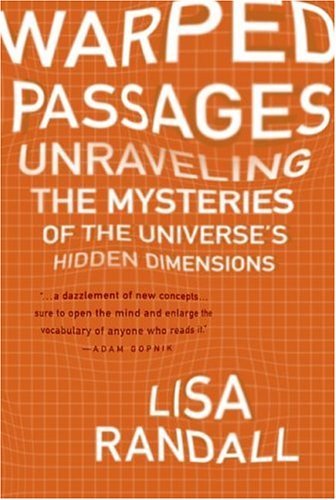Syllabus for Freshman Seminar on Extra Dimensions
- At NIF, a Quest for Fusion Energy (or Maybe Folly) - New York Times
- Large Hadron Collider (LHC) - New York Times
- Biggest Supernova - New York Times
- David Kestenbaum:The search for supersymmetry- video lecture
- Gliese 581c - New York Times
- Stephen Hawking Plans Prelude to the Ride of His Life - New York Times
- Light Speeds Up an Asteroid as it Spins - New York Times
- Cosmic-Ray Detector May Be Shelved - New York Times
- Large Hadron Collider and Black Holes - Los Angeles Times
- Large Hadron Collider and Black Holes - New York Times
- Flatland: A romance of many dimensions
Location: Physics Rm. 432.
Time: Tue. Thu. 10:0-10:50 pmLecturer: John Terning
Office: 435
Office Hours: T 11:00-11:50
Web Page: /teaching/FRS/
Course Description:
This course will examine traditional and current thoughts about extra dimensions and how to test for their existence. Popular discussions of extra spatial dimensions date back over 100 years, but have recently attracted renewed attention. What we mean by an extra dimension will be examined; as well as why we regard time as the fourth dimension. Ideas about how extra dimensions of space (the fifth and higher dimensions) can be hidden from our view will be covered, including the latest suggestions inspired by string theory. The role of experiment in probing extra dimensions will also be surveyed. No mathematics will be used. High school physics will be helpful, but not required.
Format:
In addition to the 2 weekly meetings, students will be expected to do weekly reading, mostly from the book "Warped Passages", by Prof. Lisa Randall.
Textbook:
"Warped Passages"Discussion Schedule:
You should come to the seminar prepared to discuss or (ask questions about) the current reading. At least one hour before class time you should send a "tweet" about something you want to discuss during the seminar. This will require that you sign up for a free Twitter account. Your "tweet" should contain the hashtag #xdim.
April 2: Intro. - Chap. 1
April 4: Chap. 2 - Chap. 3
April 9: Chap. 4
April 11: Chap. 5
April 16: Chap. 6
April 18: Chap. 7
April 23: Chap. 8
April 25: Chap. 9
April 30: Chap. 10
May 2: Chap. 11 - Chap. 12
May 7: Chap. 13
May 9: Chap. 14
May 14: Chap. 15 - Chap. 16
May 16: Chap. 17 - Chap. 18
May 21: Chap. 19
May 23: group work
May 28: Chap. 20 - Chap. 21
May 30: group work
June 4: Chap. 22 - Chap. 23
June 6: Chap. 24 - Chap. 25
Tweets about "extra dimensions"
April 4: Chap. 2 - Chap. 3
April 9: Chap. 4
April 11: Chap. 5
April 16: Chap. 6
April 18: Chap. 7
April 23: Chap. 8
April 25: Chap. 9
April 30: Chap. 10
May 2: Chap. 11 - Chap. 12
May 7: Chap. 13
May 9: Chap. 14
May 14: Chap. 15 - Chap. 16
May 16: Chap. 17 - Chap. 18
May 21: Chap. 19
May 23: group work
May 28: Chap. 20 - Chap. 21
May 30: group work
June 4: Chap. 22 - Chap. 23
June 6: Chap. 24 - Chap. 25
Assignment Schedule:
April 16: summary of chapter 2
Aril 30: first essay
May 2: choice of final essay topic
May 21: draft of final essay
June 6: final essay
Slides
Chapter 1: Demystifying Dimensions
Chapter 2: Curled-up Dimensions
Chapter 4: Theoretical Physics
Chapter 6: Quantum Mechanics>
Chapter 15: The Theory Formerly Known as String
Chapter 18: Kaluza-Klein Particles
Chapter 19: Large Extra Dimensions
Chapter 20: Warped Extra Dimensions
Grading:
Students will be graded on:
the quality of their participation in class discussion (20%),
in-class assignments (10%),
a 400-500 word summary (5%),
a short midterm paper , 750-1000 words (15%),
draft of final paper , 750 words minimum, (10%),
and on a final paper , 1200-1500 words (40%).
Additional Materials
New York Times Science
Other Information
Prized Writing at UC Davis.
For help with writing see the Online Writing Lab.
If you have not already done so please review the UC Davis Code of Academic Conduct.
If you need to document a learning disability contact the Student Disability Center.
